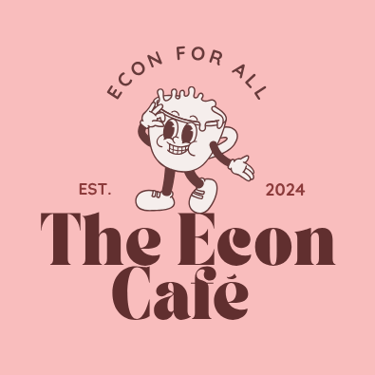How Labubus turned me into a Capitalist Gremlin (Part 2: Buying our Way Out of an Existential Crisis)
BLOGFEATURED
What if buying tiny toys wasn’t just retail therapy — but a coping mechanism for a system that’s left us behind? This piece unpacks the emotional economics behind Labubus and why we keep buying.
From TikTok unboxings to Pop Mart having to stop selling them in-store due to concerns around their employees’ safety, Labubus, as we have already established, have a terrifyingly firm grip on their fifteen minutes of fame; people are determined to fill as many landfills as possible with these pocket-sized monsters the moment they go out of trend. So much so, that people are willing to pay hundreds of dollars for their favourite designs, but why? Surely this money would be well spent elsewhere? For many in our generation, spending isn’t just about having things. It’s about feeling something. In a world where economic stability increasingly feels like a myth and burnout is a baseline, tiny joys like the experience of opening Labubus offer a wonderful, albeit weird, kind of comfort. Modern consumerism isn’t always about greed. Sometimes it’s about survival; a coping mechanism dressed in glossy packaging.
Let’s talk about why.
This isn’t the first time we’ve lost our collective minds over tiny plush things. Back in the 1990s, the world went feral over Beanie Babies (Now known as Beanie Boos). Parents queued for hours, rare editions sold for thousands, and people genuinely believed they were investing in their futures one bean-stuffed penguin at a time. These weren’t just thought of as toys; they were seen as investments, expected to appreciate in value as the frenzy grew and the market for Beanie Babies seemed destined to keep climbing. This irrational valuation mirrors speculative bubbles seen in markets like housing or stocks, where excessive demand drives up prices beyond the asset’s intrinsic value, inflating a bubble that inevitably bursts when the hype fades and reality sets in. This is a classic example of the bandwagon effect, where consumer decisions are influenced by social behaviour rather than rational analysis. In the late 90s, there was growing uncertainty around the dot-com bubble, the early internet era, and a changing economy. Beanie Babies offered a low-barrier investment that felt tangible and, most importantly, feasible, giving people a sense of control over their financial future, even if irrational.
In short, people weren’t just collecting Beanie Babies- they were trying to buy a slice of financial security, emotional stability, or social status.
This is similar to the way Labubus are purchased today. In an economy where most young people face the harsh reality of renting forever, crippling student debt and even healthcare insecurity, putting this much importance on buying small, more realistic things becomes a proxy for progress– a way to feel like you’re collecting something, achieving something or even finally owning something. These sorts of knick-knacks have almost entirely replaced things like luxury handbags or real estate as markers of identity and “belonging”. Luxury hauls on Instagram that used to garner praise and desire five years ago are now criticised as some people are unable to afford healthcare, making the flaunting of that $12,000 Hermes bag distasteful and highly out of touch. Instead, small figurines like Smiskis still confer status in social spaces.
Shopping for some people became their form of emotional regulation during some of the economically unstable times, people were getting fired, climate change has now exceeded an irreversible point, the political state is conflicted and owning a house seemed out of the question. Easy ways to find dopamine became retail therapy, signifying how much capitalism trains us to ignore and soothe existential dread by opening tiny blind boxes that give people their false sense of success.
A 2024 study on digital payment behaviour in Shanghai coined the term “Spendception”, noting how mobile and card payments reduce the psychological visibility of spending. This erodes the awareness of money spent, leading to more impulsive buying. Experts even identify “doom spending” (compulsive buying in response to stress or hopelessness) as a rising phenomenon. In April 2025, CreditCards.com reported that 1 in 5 Americans engage in doom spending as a way to cope with political or economic anxiety. While it provides temporary emotional relief via dopamine, it often leads to credit card debt, guilt and worsened mental and financial health.
So, buying Labubus in this economy? It may have a deeper meaning behind it. Whether it’s a sign of the increase in gambling-like behaviour in people’s spending habits, or a worsening economy as a coping mechanism, one thing is for sure. They symbolise a deeper problem; not just our craving for control or comfort in uncertain times, but the way consumerism has become both a distraction from and a symptom of systemic failure.
